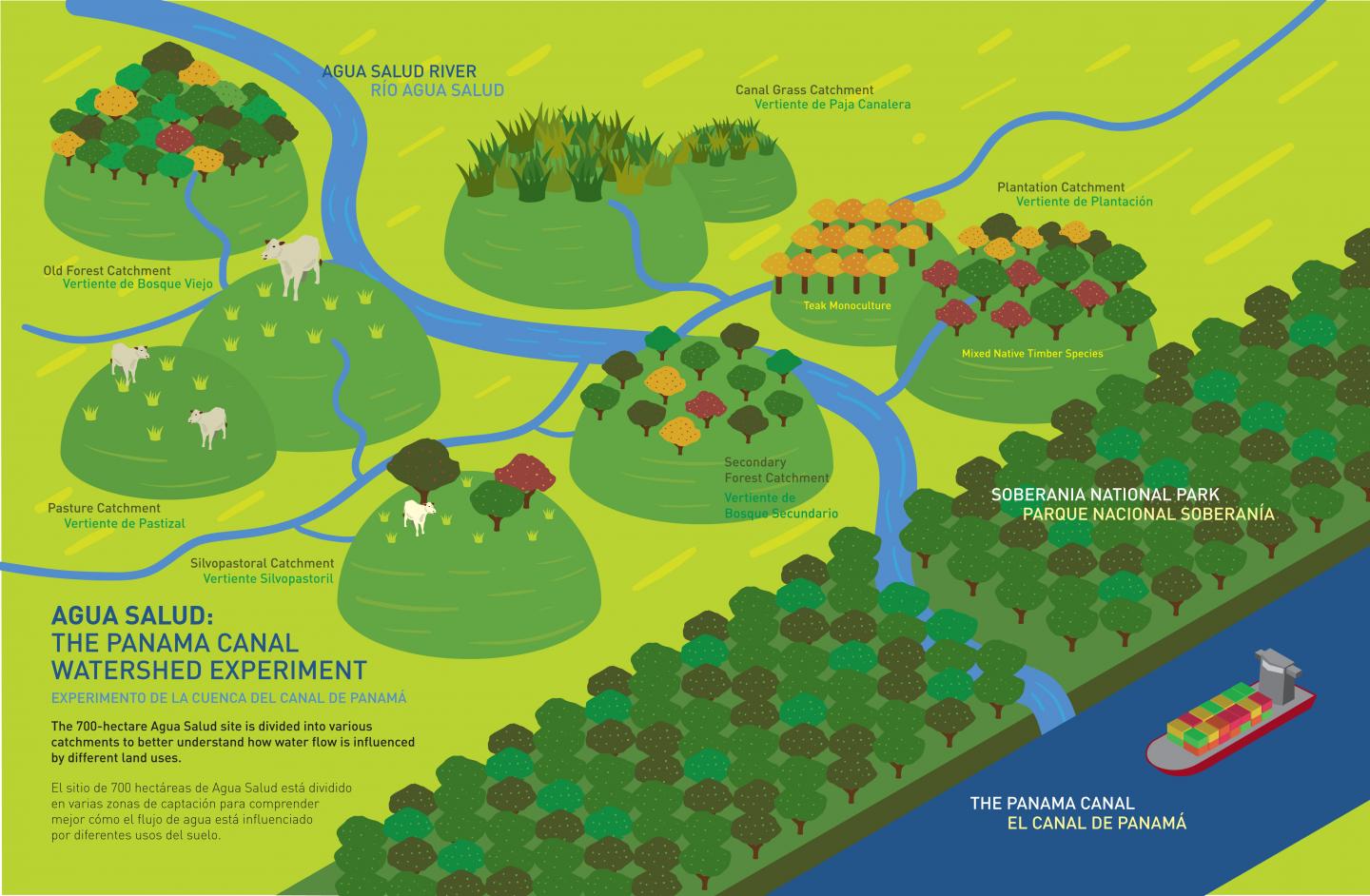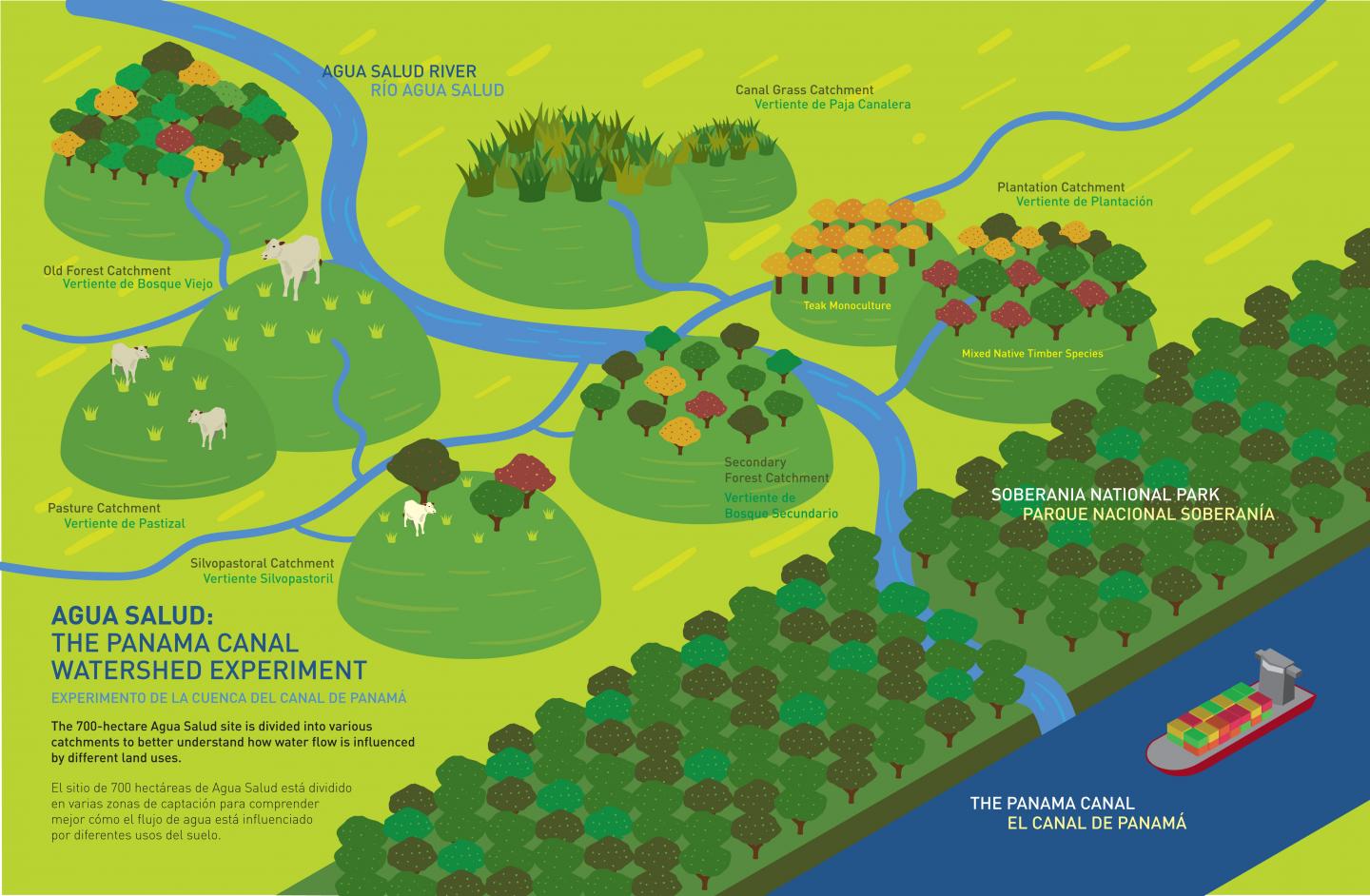
Credit: Jorge Aleman, STRI
Trees communicate via a "wood wide web" of roots and microbes in ways that enhance their growth and can reduce carbon dioxide in the atmosphere, mitigating climate change. But no one knows why so many tropical trees team up with bacteria to capture nitrogen from the air when they already grow in nitrogen-rich soils. A super-sized experiment at the Smithsonian Tropical Research Institute (STRI) to address this paradox showed that each species has its own unique nutrient-capture strategies, underscoring the importance of biodiversity for successful reforestation projects.
Tropical soils may be rich in nitrogen, but poor in phosphorus useable by plants. Many tropical tree species–usually in the bean (legume) family–have nodules on their roots formed by bacteria to capture nitrogen gas from the air and convert it into nitrogen useful for growth and carbon storage.
"People speculated that nitrogen-fixing species might channel extra nitrogen into making the phosphatase enzyme to capture phosphorus," said Jefferson Hall, director of the Smithsonian's Panama Canal watershed experiment–the Agua Salud Project. "But the evidence was limited."
Hall and colleagues realized that the landscape-scale experiment designed to find out how tropical trees store carbon, affect the water supply and conserve biodiversity, would be the perfect place ask this question, because, unlike in natural forests, there are enough individuals of each species to be able to generalize about how they behave. The team compared between six and 13 individual trees in each of four nitrogen-fixing and three non-nitrogen fixing species to produce phosphatase.
"I think about trees as individuals, as active decision makers, communicating and exchanging materials, choosing one strategy over another," said Sarah Batterman, first author of this study and associate professor and Natural Environment Research Council Independent research fellow at the University of Leeds, UK. "Overall, nitrogen-fixing trees produced more phosphatase, but non-nitrogen fixers did too, sometimes as much as nitrogen fixers, showing the diversity of strategies out there."
"We were hoping to find evidence for the nutrient trading hypothesis–that nitrogen fixers invest in nitrogen-rich phosphatase enzymes, which would resolve the paradox of why there are more nitrogen-fixing trees in these nitrogen-rich tropical forest soils," Batterman said. "But we didn't find any across-the-board support for this hypothesis. So then we considered the nutrient balance hypothesis–that trees adjust their nutrient-capture strategies to satisfy their needs–fixing more nitrogen in nitrogen-poor soils, making more phosphatase in phosphorus-poor soils. We didn't find across-the-board support for this, either."
"An important finding of this study is that high phosphatase activity is not restricted to nitrogen-fixing trees, but varies markedly among both legumes and non-legume species," said Ben Turner, co-author and director of the STRI Soils Laboratory.
"The exciting thing is that now we can apply what we learned about basic biological processes to reforestation efforts to maximize carbon capture and mitigate climate change," Batterman said. "Now we know which tree species may be better at accessing phosphorus, which may be better at getting nitrogen and, most importantly, that biodiversity is critical for reforestation projects."
The Agua Salud Project, a collaboration between STRI, the Panama Canal Authority and Panama's Ministry of the Environment (MiAmbiente). Native species plantations are part of the Smart Reforesation, BiodiversiTREE and TreeDivNet programs.
"We would especially like to thank supporters of the Agua Salud Project–ForestGEO, the Heising-Simons Foundation, HSBC bank, Stanley Motta, Small World Institute Fund, Smithsonian Institution's Competitive Grants for Science, Smithsonian Institution's Grand Challenges Grants, the Hoch family, the U.S. National Science Foundation, National University of Singapore, STRI and Yale-NUS college–because they believe in narrowing the distance between applied and theoretical research," said Hall. The lead author also received support from Princeton University, a STRI short-term fellowship program and a United Kingdom Natural Environment Research Council grant.
###
The Smithsonian Tropical Research Institute, headquartered in Panama City, Panama, is a unit of the Smithsonian Institution. The Institute furthers the understanding of tropical biodiversity and its importance to human welfare, trains students to conduct research in the tropics and promotes conservation by increasing public awareness of the beauty and importance of tropical ecosystems. Website. Promo video.
Ref. Batterman, S.A, Hall, J.S., Turner, B.L, et al. 2018. Phosphatase activity and nitrogen fixation reflect species differences, not nutrient trading or nutrient balance, across tropical rainforest trees. Ecology Letters. https://onlinelibrary.wiley.com/journal/14610248
Media Contact
Beth King
[email protected]
202-633-4700 x28216
@stri_panama
http://www.stri.org
Related Journal Article
http://dx.doi.org/10.1111/ele.13129





